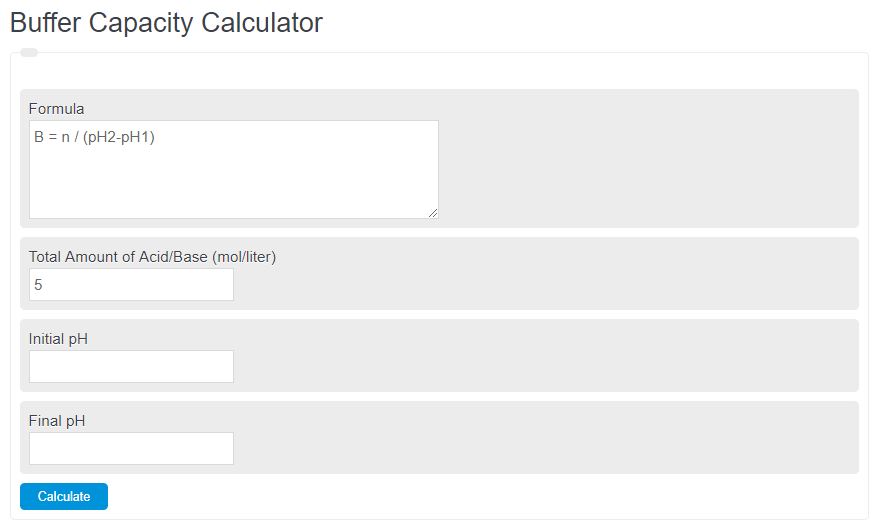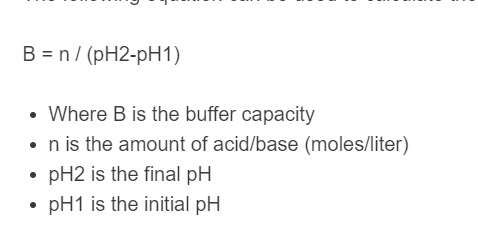Enter the total amount of acid or base, the initial pH, and the final pH into the calculator to determine the buffer capacity.
- Henderson Hasselbalch Calculator
- Vapor Pressure Calculator (Solvent/Solution)
- Molarity Calculator
- Mass Molarity Calculator
- Ph to Voltage Calculator
- Acid Dissociation Constant Calculator
Buffer Capacity Formula
The following equation can be used to calculate the buffer capacity of a base of acid reaction.
B = n / (pH2-pH1)
- Where B is the buffer capacity
- n is the amount of acid/base (moles/liter)
- pH2 is the final pH
- pH1 is the initial pH
To calculate the buffer capacity, divide the amount of acid or base by the difference in pH.
Buffer Capacity Definition
A buffer capacity is defined as a solution’s ability to resist a change in acidity or pH.
Buffer Capacity Example
How to calculate the buffer capacity?
- First, determine the amount of acid/base.
Measure the moles per liter of acid/base.
- Next, determine the final pH/
Measure the final pH of the solution.
- Next, determine the initial pH.
Calculate the initial pH of the solution.
- Finally, calculate the buffer capacity.
Calculate the buffer capacity using the formula above.
FAQ
A buffer capacity is a solution’s ability to resist a change in pH. The higher the buffer capacity, the harder it is to change the acidity of a solution.
A buffer capacity is calculated using the total amount of a substance and analyzing the change in pH over time of the solution.

